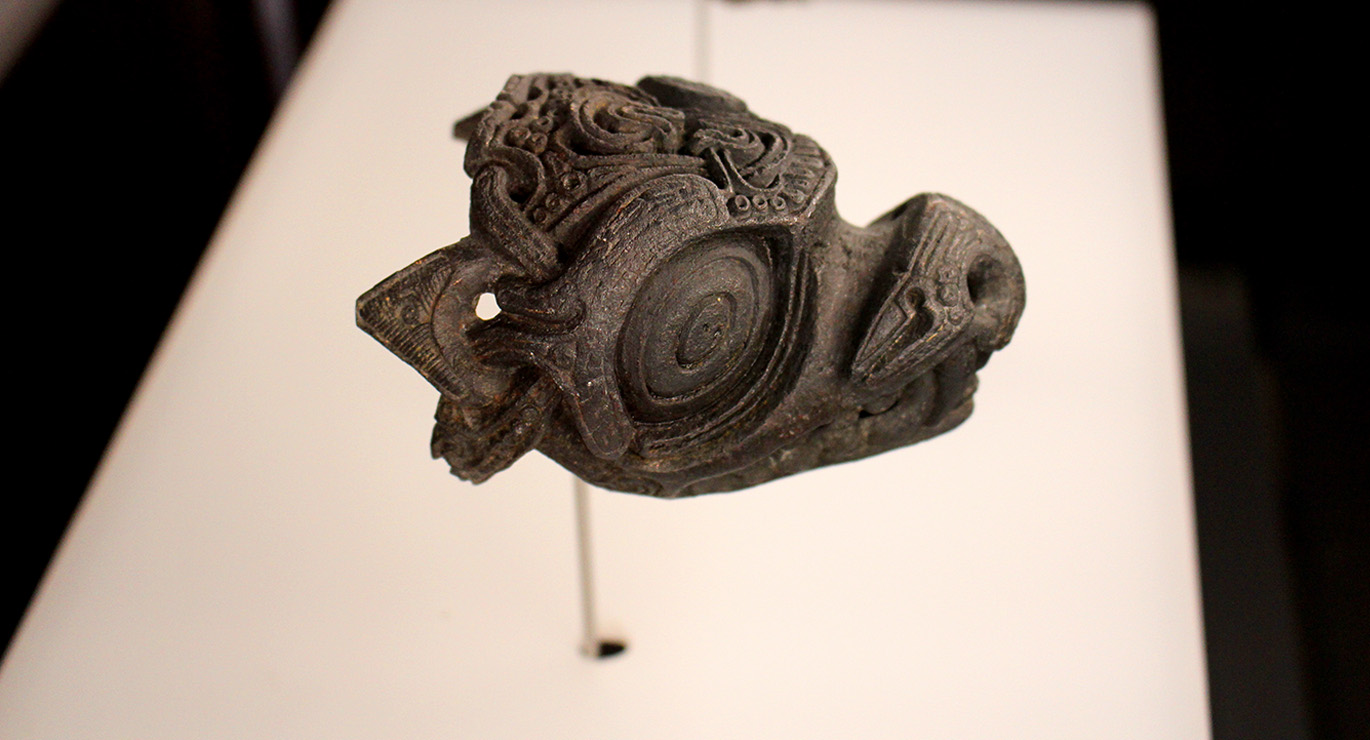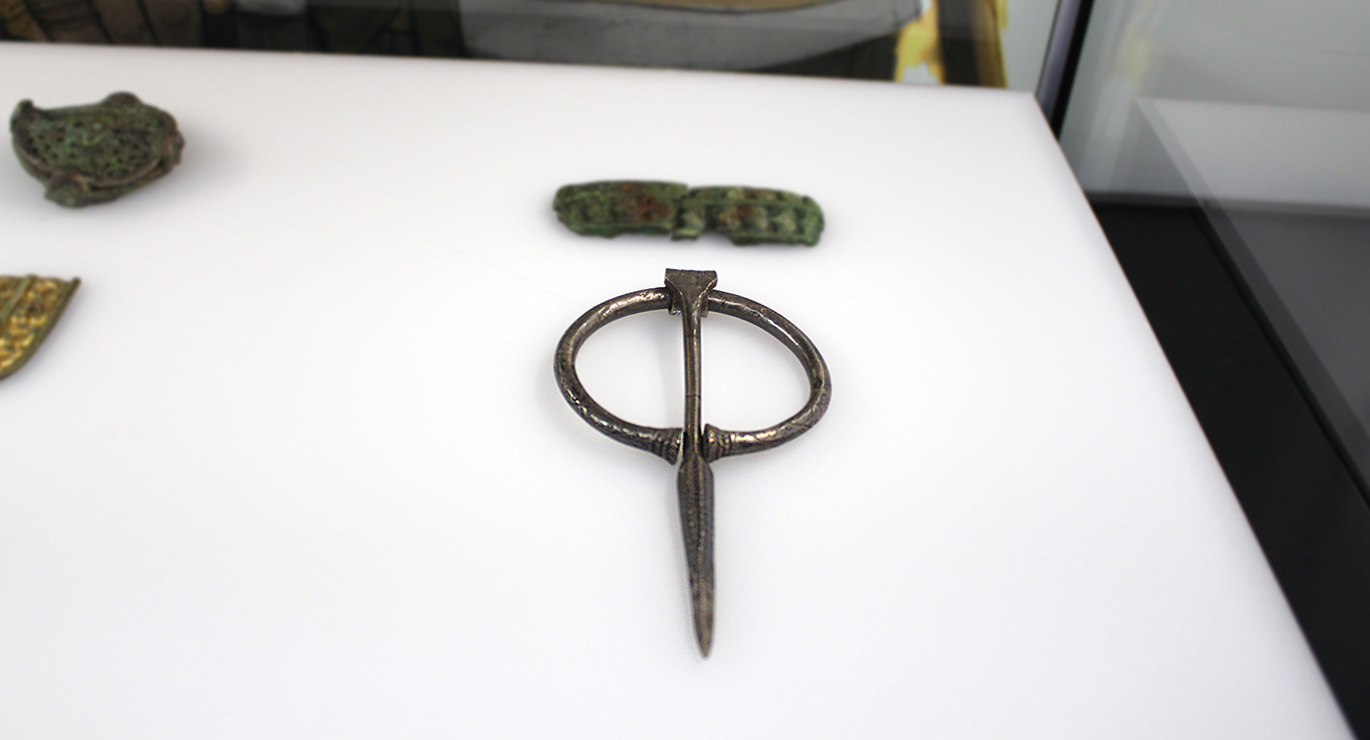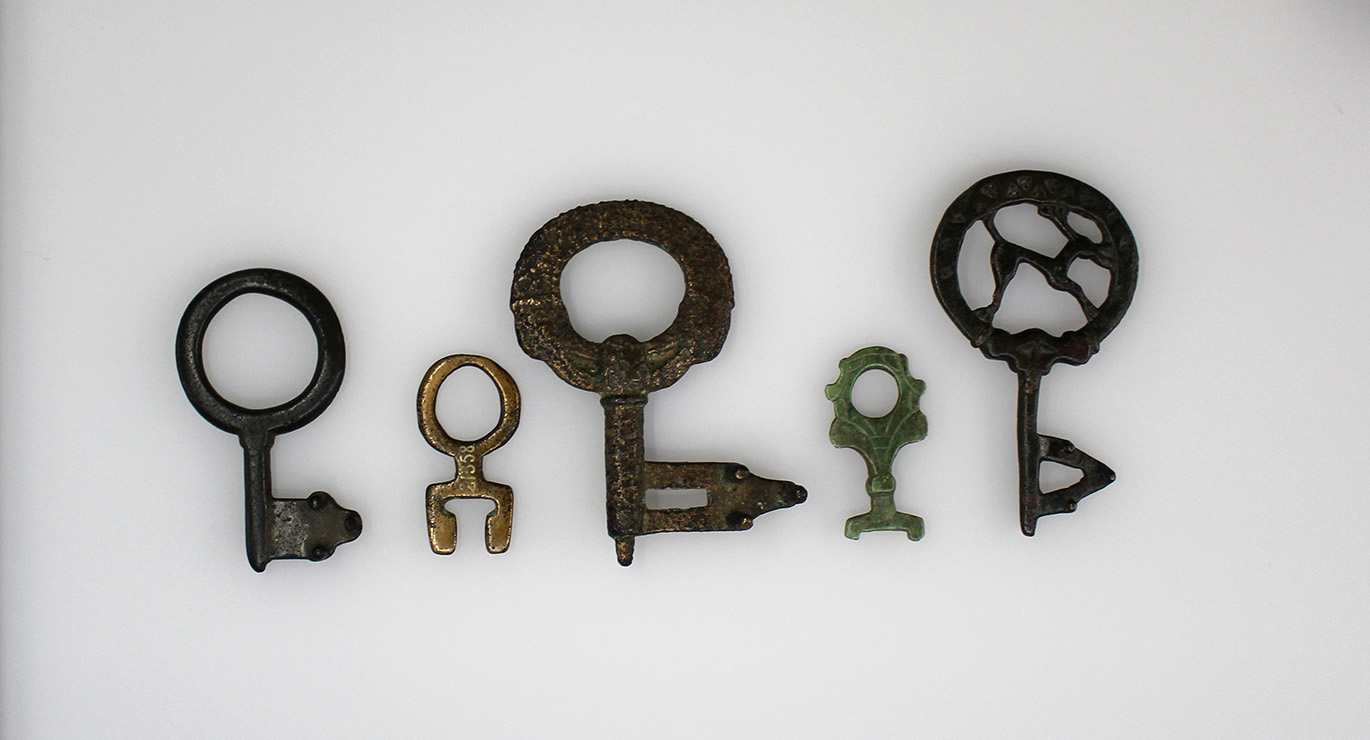October 27, 2023
3 Must-See Artifacts in Vikings: Warriors of the Sea and the Fun Facts Behind Them
Vikings: Warriors of the Sea features 140 authentic artifacts that explore the culture and history of the ancient Vikings (8th-11th Centuries CE). Everyone will discover their favorite objects, artifacts and interactives in this exhibit (there are plenty to choose from!). We asked two curators for their favorites artifacts and why. Here are a few highlights selected by the exhibit curator from the National Museum of Denmark and Fernbank’s curator (Reflections of Culture) and Vice President of Programming and Collections.
Favorite Objects selected by Peter Penz, Vikings: Warriors of the Sea Curator
The exhibit shows Viking society as a sophisticated civilization—without ignoring the touch of mystery that still clings to their achievements and religion, giving room for the imagination.
1. Favorite Item: Fitting from a harness bow: Wolf with open jaws

The most important wolf in Norse mythology is the monstrous Fenrir-wolf. The gods attempted to bind him with huge metal chains, but the wolf was able to break them all. Therefore, they commissioned the dwarves to forge a chain that was impossible to break. The dwarves made a magical chain called Gleipnir, meaning “the open one,” from different things in the world, and these things do not exist in the world anymore: the sound of a cat’s footsteps, the beard of a woman and the breath of fish.
2. Favorite Item: Silver Brooch

This type of penannular brooch was very common all over the Northern world. The brooch would have functioned as a dress or cloak fastener. The brooch developed through the Viking period and as time went by, the size of the brooches increased. Some of the largest have pins around 12 inches in length. In consequence, laws relating to the wearing of such brooches dealt with injuries caused by protruding brooch pins.
Favorite Artifact selected by Dr. Bobbi Hohmann, Vice President of Programming and Collections
3. Favorite Items: Keys

As an archaeologist by training, I really enjoy seeing artifacts that highlight what everyday life was like for people in the past. For example, there is a grouping of five keys on display that would have been used on locks for chests and cupboards in Viking households. Women who were married to farm owners played an important role as house managers, and they would wear these keys suspended from a belt or chain. Keys like this have been found in many female graves, showing that they were valued objects closely linked to their owners.
Discover this exhibit full of artifacts, interactives and replicas, including weaponry, jewelry, gold, a model ship, the King’s jelling stone and more. Hurry in to see this exhibit before it closes Jan. 1, 2024.









